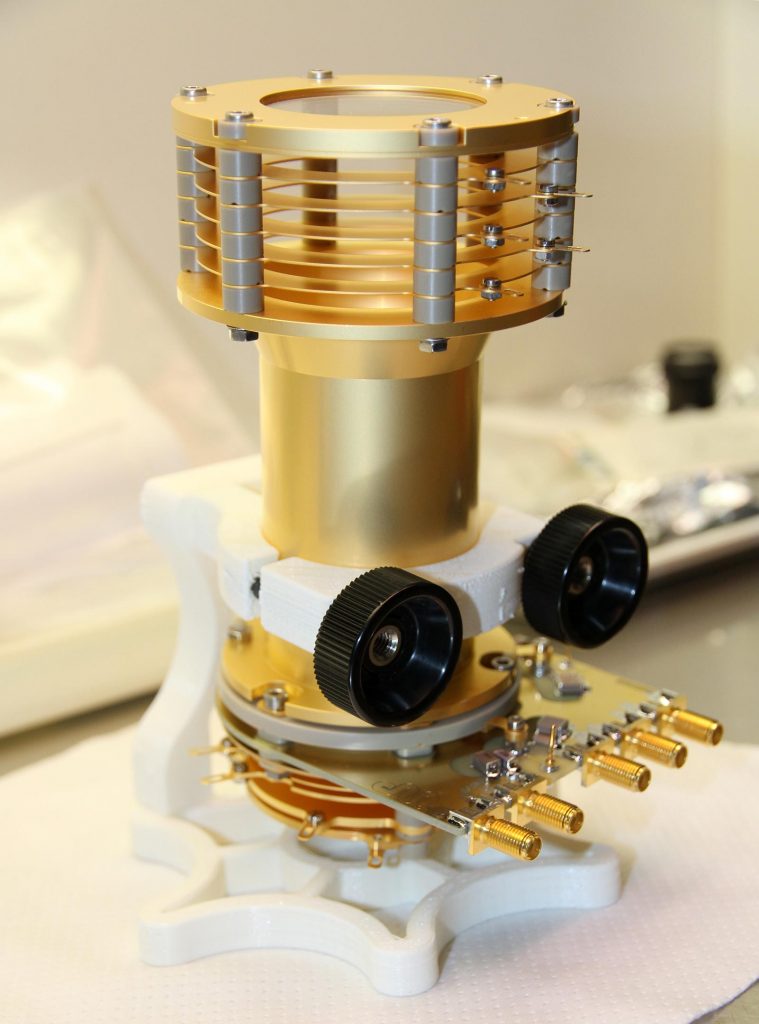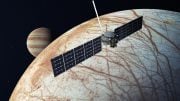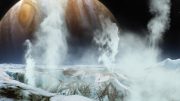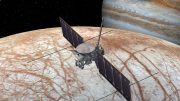Researchers at the University of Bern have developed the highly sensitive ORIGIN instrument, which can provide proof of the smallest amounts of traces of life, for future space missions. Space agencies such as NASA have already expressed interest in testing ORIGIN for future missions. The instrument may be used on missions to the ice moons of Europa (Jupiter) and Enceladus (Saturn), for example.
The question of whether life exists beyond the Earth is one of humanity’s most fundamental questions. Future NASA missions, for example, aim to examine the ice moons of Jupiter and Saturn, which may potentially shelter life in the liquid oceans underneath the thick layer of ice, on the ground. Proving traces of life beyond the Earth is extremely challenging, however. Highly sensitive instruments that take measurements on the ground with the greatest possible degree of autonomy and with high precision – millions of kilometers from the Earth and thus without direct support from humankind – are required.
An international group of researchers under the leadership of Andreas Riedo and Niels Ligterink at the University of Bern have now developed ORIGIN, a mass spectrometer that can detect and identify the smallest amounts of such traces of life. They describe the instrument in a recently published article in the specialist journal Nature Scientific Reports. Niels Ligterink from the Center for Space and Habitability (CSH) is the lead author of the international study, and co-author Andreas Riedo from the Physics Institute at the University of Bern developed the instrument in the laboratories of the space research and planetary sciences division of the Physics Institute. Various international space agencies, particularly NASA, have already expressed interest in testing ORIGIN for future missions.
New instrument required
Since the first Mars mission “Viking” in the 1970s, humanity has been searching for traces of life on Mars using highly specialized instruments that are installed on landing platforms and rovers. In its early years, Mars was Earth-like, had a dense atmosphere, and even liquid water. However, as Niels Ligterink explains, Mars lost its protective atmosphere over the course of time: “As a result of this, the surface of Mars is subjected to high solar and cosmic radiation which makes life on the surface impossible.” NASA’s “Curiosity” rover is currently examining Mars in detail but with no concrete indications of traces of life to date.
Since the discovery by the Cassini and Galileo missions of the global oceans beneath kilometers of ice layers on Jupiter’s moon Europa and Saturn’s moon Enceladus, these two bodies have increasingly become the focus of the search for extraterrestrial life for researchers. According to current knowledge, the oceans have all of the properties which are not only needed for the occurrence of life, but also which provide environments in which life can exist in the long term. NASA, therefore, plans to land a mission on Jupiter’s moon Europa around 2030 and take measurements on the ground. The goal: Identification of life. Co-author Prof. Dr. Peter Wurz from the Physics Institute at the University of Bern says: “Concepts which were specially developed for Mars cannot be simply applied to other bodies in our solar system because they are very different. New instruments with higher sensitivity and simpler and more robust analysis systems must be designed and used”.
Unprecedented measurement sensitivity for proof of life in space
ORIGIN is one of the new instruments that surpass previous space instruments in terms of measurement sensitivity by many orders of magnitude. Various international space agencies have expressed great interest in the instrument for future missions. Andreas Riedo says: “NASA has invited us to participate and test our instrument in the Arctic. The Arctic is the optimal test environment in the context of the EUROPA LANDER mission, which should start in 2025, which will allow us to demonstrate the performance of ORIGIN.”
Amino acids are key components of life as we know it on Earth. Contemporaneous proof of certain amino acids on extraterrestrial surfaces, such as those of Europa, allow conclusions to be drawn about possible life. The measurement principle developed by the Bern-based researchers is simple. Niels Ligterink explains: “Laser pulses are directed at the surface to be examined. In the process, small amounts of material are detached, the chemical composition of which is analyzed by ORIGIN in a second step”. Andreas Riedo adds: “The compelling aspect of our technology is that no complicated sample preparation techniques, which could potentially affect the result, are required. This was one of the biggest problems on Mars until now,” says Riedo. The amino acids which have been analyzed with ORIGIN to date have a specific chemical fingerprint which allows them to be directly identified. Niels Ligterink: “To be honest, we didn’t expect that our first measurements would already be able to identify amino acids.”
The discovery of traces of past or present life on bodies in our solar system beyond the Earth is of great importance for a better understanding of the existence of life in the universe and its genesis. Andreas Riedo says: “Our new measurement technology is a real improvement on the instruments currently used on space missions. If we are taken along on a future mission, we may be able to answer one of humanity’s most fundamental questions with ORIGIN: Is there life in space?”
Reference: “ORIGIN: a novel and compact Laser Desorption – Mass Spectrometry system for sensitive in situ detection of amino acids on extraterrestrial surfaces” by Niels F. W. Ligterink, Valentine Grimaudo, Pavel Moreno-García, Rustam Lukmanov, Marek Tulej, Ingo Leya, Robert Lindner, Peter Wurz, Charles S. Cockell, Pascale Ehrenfreund and Andreas Riedo, 15 June 2020, Scientific Reports.
DOI: 10.1038/s41598-020-66240-1








Be the first to comment on "This Device Is the Most Sensitive Instrument in the Search for Life in Space"